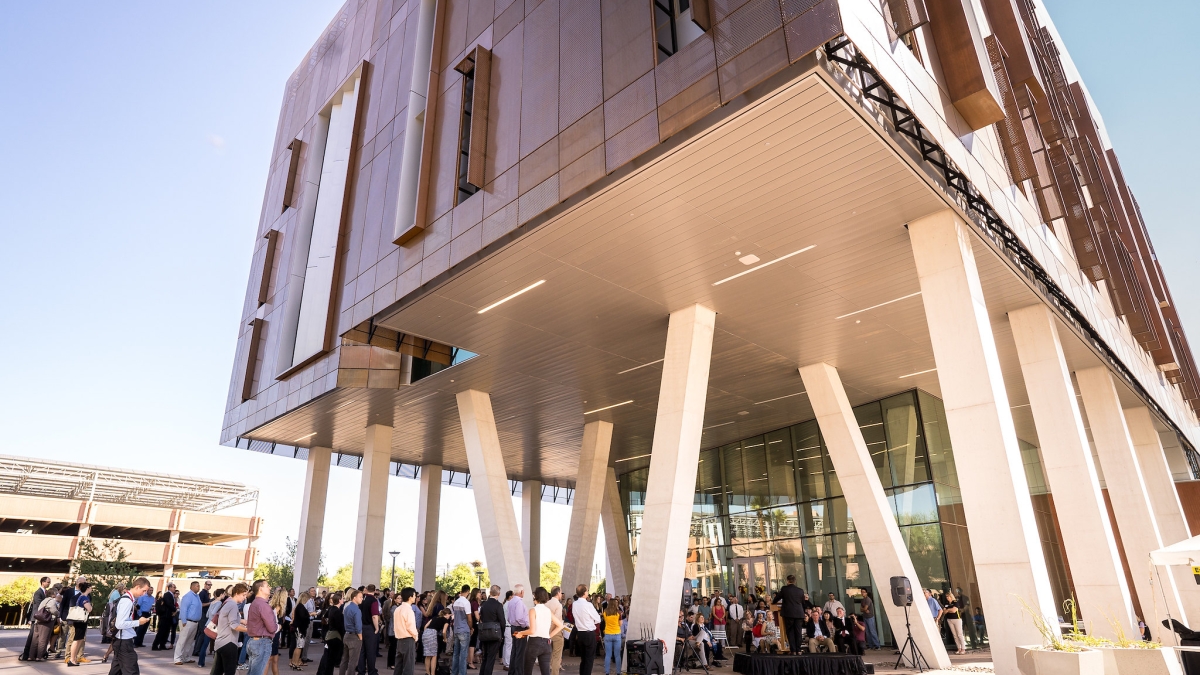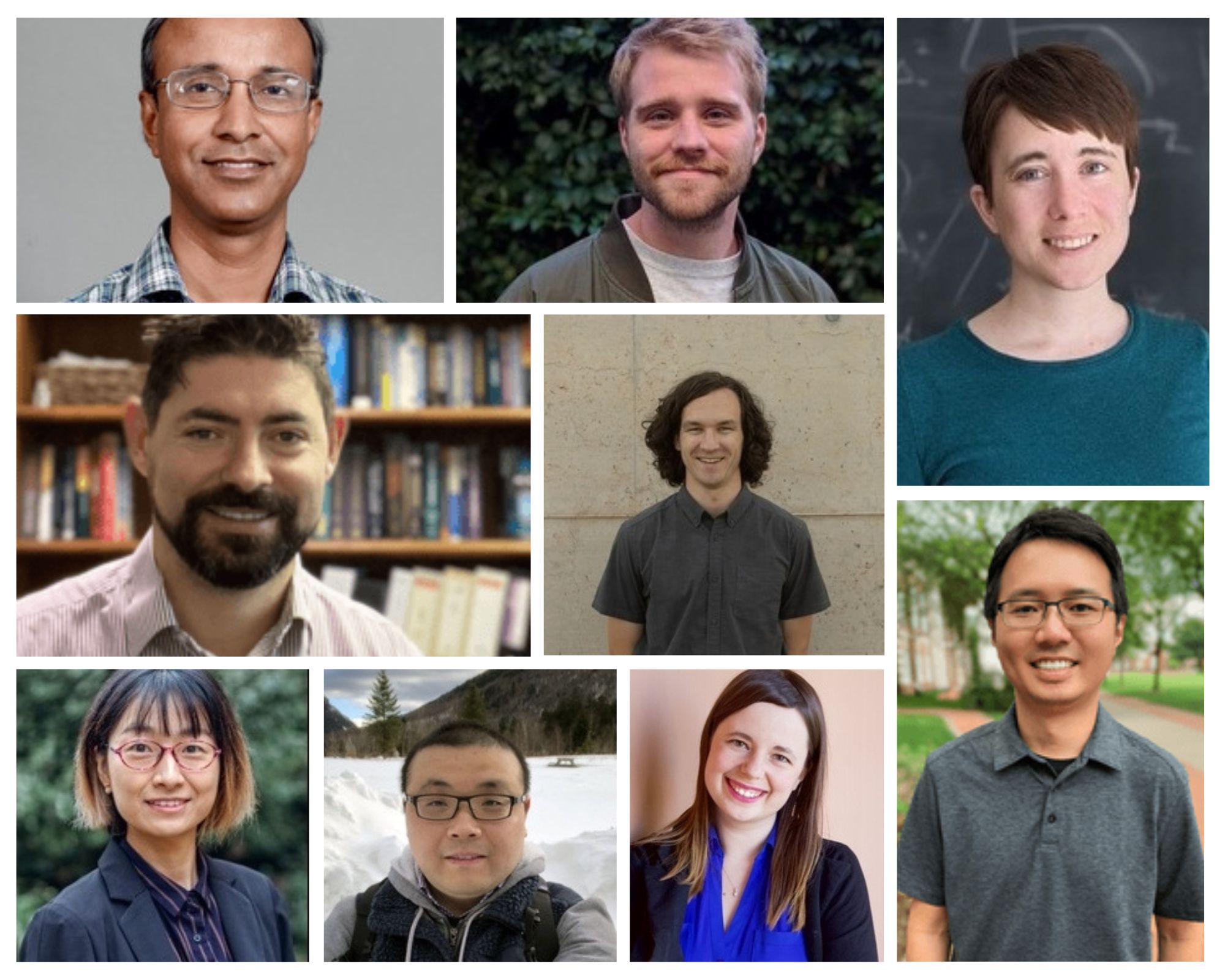ASU Biodesign Institute recruits diverse new talent to tackle pressing challenges

The Biodesign Institute at ASU welcomes nine new faculty members across a broad range of disciplines, including sustainable manufacturing, evolutionary biology and neurodegenerative disease research. Photo courtesy ASU
The Biodesign Institute at Arizona State University continues its mission to improve human health and quality of life by welcoming nine dynamic new faculty members.
Extending Biodesign's breadth of expertise across biology, chemistry, physics, engineering, materials science and medicine, these scholars bring innovative approaches to demanding challenges in health, sustainability and society.
At the Biodesign Center for Biocomputing, Security and Society, physicist and astrobiologist Cole Mathis will embark on a journey to probe the borderlands between the living and nonliving. He brings with him a novel theoretical approach — Assembly Theory — which will be employed alongside experimental measurements to develop a life detection system. This system can not only potentially identify living entities on alien worlds but also recognize the birth of new lifeforms in a laboratory setting. As a NASA Astrobiology Fellow and an alum of the University of Glasgow's Artificial Life team, Mathis is adept at bridging theoretical concepts from physics and complex systems science with experimental and data-driven methods from chemistry and astrobiology.
In the Biodesign Virginia G. Piper Center for Personalized Diagnostics, Masmudur Rahman will focus his efforts on understanding how cellular innate and intrinsic factors influence virus replication. His research is significant, particularly for cancer cells, where he seeks to harness the unique vulnerability of cancer to oncolytic viruses, including the myxoma virus. Rahman will address the challenges of enhancing virus replication, delivering the virus to metastatic sites, and sparking potent antitumor immune responses by developing combination therapy and engineering the oncolytic myxoma virus.
The Biodesign Center for Molecular Design and Biomimetics welcomes Di Liu, who will expand his work on designing and constructing nanoarchitectures utilizing the programmability of nucleic acid molecules, an endeavor he hopes will further our understanding of DNA topology, facilitate the determination of RNA structures, and enhance the efficacy of RNA-based therapeutics. His research could help pioneer new antibiotics to combat antimicrobial resistance. Determining the high-resolution structures of RNA molecules, such as those found in bacteria and viruses, will help us develop new drugs that target RNA or create advanced mRNA medicines, directly influencing how we treat various illnesses, such as cancer and infectious diseases.
Joining the Biodesign Center for Mechanisms of Evolution, Pengyao Jiang is a researcher with a passion for investigating evolutionary mechanisms at the molecular level. Using common organisms, including yeast and fruit flies, she's crafting advanced ways to explore how tiny changes in genes affect an organism's features. Her research delves deep into understanding how these changes in genes play out in nature and influence the way species look or behave. By combining lab experiments with computer analysis and mathematical predictions, Jiang is pioneering a holistic approach that promises a richer understanding of the hidden workings of evolution.
The ASU-Banner Neurodegenerative Disease Research Center is also expanding its team. Henry Tseng, a molecular and cellular neuroscientist, aims to unravel how normal aging and age-related risk factors lead to neurodegenerative diseases such as Alzheimer’s disease and Parkinson’s disease. The mechanisms by which aging contributes to changes in the brain remain poorly understood. Employing a multidisciplinary approach, starting at the protein level and progressing towards more relevant animal models, Tseng's goal is to understand how aging triggers pathological protein aggregation and consequently nerve cell death, which are both commonly observed in diseased brains. As the cases of Alzheimer’s disease and Parkinson’s disease have been growing rapidly, he also hopes to develop novel therapeutic strategies to confront these devastating diseases.
Also joining the center's faculty is Ashley Keiser, a neuroscientist with a rich experience in behavioral and molecular neuroscience. Keiser’s research will delve into the molecular and epigenetic mechanisms that mediate learning and memory throughout life. With a keen interest in understanding how modifiable lifestyle factors affect cognitive function, she is on a mission to decipher the impact of factors like exercise, diet and environment on learning and memory function. Her team has discovered a gene that appears to control memory formation and can help counter memory issues related to aging and Alzheimer's disease. She will explore how this mechanism facilitates and drives learning and consolidation during the aging process, and in the case of Alzheimer’s, why the functioning of this gene is reduced in both normal aging and neurodegenerative disease.
Top, from left: Masmudur Rahman, Jeff Self, Caitlin Sample; middle, from left: Yoan Simon, Cole Mathis; bottom, from left: Pengyao Jiang, Di Liu, Ashley Kaiser, Henry Tsang
Finally, the Biodesign Center for Sustainable Macromolecular Materials and Manufacturing is adding three new members to its faculty.
Yoan Simon brings a wealth of experience in polymer science. He is renowned for his innovative work on stimuli-responsive materials, particularly in light upconversion, mechanochemistry and polymer assemblies in solution. Trained in France, with significant academic engagements in the U.S. and Switzerland, Simon's interdisciplinary approach — bridging synthetic organic chemistry, materials science, chemical engineering, and energy research — promises transformative sustainable advancements in macromolecular materials and manufacturing at ASU.
Joining Simon is Caitlin Sample, who brings her expertise in the molecular design of high-performance polymers with reduced environmental impacts. Sample has honed her skills in designing polymeric materials inspired by complex functions of natural systems. She is developing synthetic techniques for a circular economy, including reprocessable plastics and functional resins for advanced additive manufacturing. As 3D printing grows, there's increasing interest in creating objects from recyclable materials that can be customized in terms of their physical and chemical properties, making the technology more versatile and environmentally friendly.
Finally, the center welcomes Jeffrey Self, whose research focuses on developing sustainable processes for manufacturing polymer parts with advanced microstructures. Polymers play an important role in a wide range of sustainable technologies, including water purification, oil-spill remediation, and lightweight composites. Self has been successful in creating strong, environmentally friendly foams; making special mixtures that respond to light and improve the fabrication of certain plastics; and designing 3D-printed materials that change with specific triggers.
More Science and technology

Google grant creates AI research paths for underserved students
Top tech companies like Google say they are eager to encourage women and members of historically underrepresented groups to…

Cracking the code of online computer science clubs
Experts believe that involvement in college clubs and organizations increases student retention and helps learners build valuable…
Consortium for Science, Policy & Outcomes celebrates 25 years
For Arizona State University's Consortium for Science, Policy & Outcomes (CSPO), recognizing the past is just as important as…
